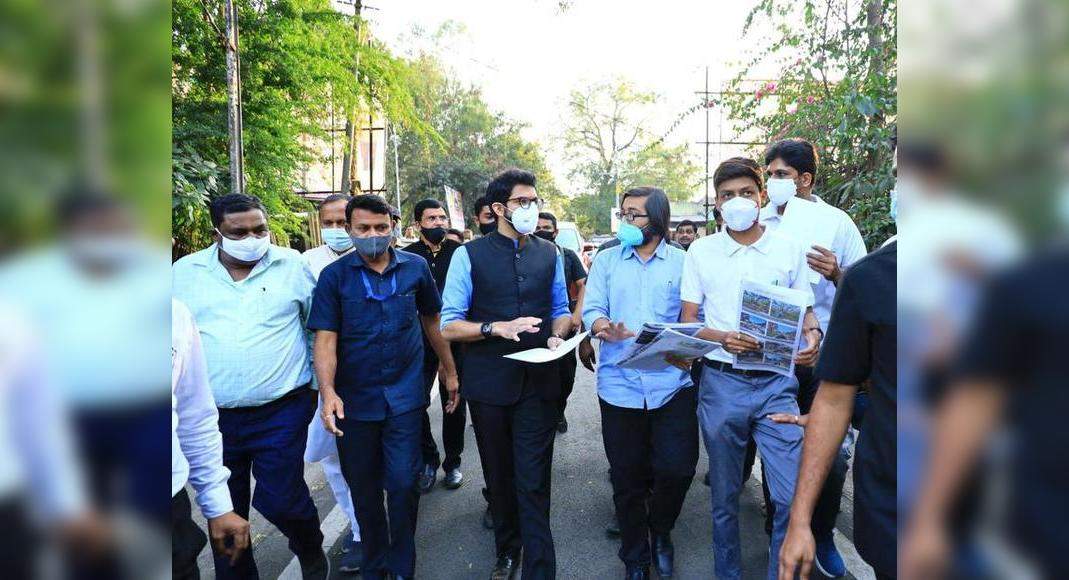‘Wild by Nature’, the 150-page book penned by naturalist and ecologist Anirudh Chaoji (53), fondly called Ani Sir by many nature lovers whom he groomed through 18 years of running pugmarks (Pugmarks) and naturalist training courses, was recently released by Justice Sunil Shukre at the Nagpur Bench of Bombay High Court and PCCF (wildlife) Nitin H Kakodkar, who retired recently.
Chaoji, who earlier worked with the Melghat Tiger Reserve (MTR) as an ecologist is presently chief naturalist with the Tadoba-Andhari Tiger Reserve (TATR).
Starting his career as a practicing landscaper to a Pugmarker to train people to pursue wildlife and adventure, Chaoji’s journey as a well-known naturalist is a long one.
Apart from being a wildlife trainer, he is also a philatelist.
An electronics graduate with a masters in marketing, he started with corporate jobs before changing track to adventure and wildlife as a career.
TOI talks to him about his maiden venture.Excerpts…Q.
How did you land up in such an offbeat field?A.
My father was an Indian Air Force (IAF) officer.
He never took us to movies and typical picnics.
Our long weekends were spent in the old, dark bungalows and forest rest houses of Totladoh, Ranidoh, Navegaon, Nagzira and Tadoba.
Passion for wildlife probably was in the genes.
What I lacked in technical knowledge then was gained from the works of Salim Ali, Frederick Champion, George Schaller, AJT Johnson, Jim Corbett and Maruti Chitampalli.
But the most important teachers have been the van majoors and forest field staff, some of my closest friends.
And now, nature guides too.Q.
What kind of a journey has it been?A.
I started training the guides in 2000 informally.
It was mainly with the intention of having a great pair of eyes with the support of field knowledge on the pugmarks and nature camps.
I taught many guides from Nagzira, Navegaon, Melghat and Tadoba the art of communicating with the urban crowd.
Today, they are the finest field naturalists.
With former principal secretary (forest) Pravin Pardeshi’s support in 2010, I extended guide training to Bhimashankar, Kaas Plateau, Sahyadri and other places.
When the initiative was taken to start community-based ecotourism in Tadoba, I got an opportunity to work with DyCF Gajendra Narwane and this was the turning point.
Since then, over 500 youth from Tadoba buffer villages who were trained are today guides, drivers, activity personnel and employed in the tourism industry.
Four years ago, I started a weekly training programme through social media for them all over Maharashtra in Marathi.
Soon it was extended to my friends in English.
Now it also goes out in Hindi and Odiya.
Today, over 5,000 nature lover friends receive and further circulate these nature bytes.
Friends like Jaydeep Das and Peeyush Sekhsaria gave the push needed to convert these bytes into the book.Q.
What is so special about your book ‘Wild by Nature’?A.
It took me four years to complete ‘Wild by Nature’.
It started as an effort to hand-hold nature guides to provide their guests a good wildlife experience beyond tiger tourism.
These guides predominantly belong to the Adivasi communities and are shy.
The objective is to help them become good storytellers.
The overall roadmap is to provide local youth with skills for non-extractive livelihoods.
These will reduce their forest dependence and also probable conflicts with wildlife.
The book will help create common man ambassadors of conservation.
The 150 pages have interesting info bytes on birds, mammals, reptiles, aqua life, insects and environmental issues.
The simple and non-technical language ensures that people are not put off by the excessive scientific terminologies.
Besides, local beliefs and cultural connections help in relating to community understanding of issues.
The intention of the book is not to make scientists but to make common people fall in love with the outdoors.
It reminds people that there is so much to see and experience in a forest.Q.
You must have motivated many to protect and conserve nature.A.
Making people fall in love with nature and the outdoors has been my passion.
But also inspiring many to follow education and careers in the field has been equally important.
Many of these youngsters are taking their ‘wild’ passion to a logical end by learning in the country’s big institutes.
I feel really happy to see young people like Pallavi Ghaskadbi collaring tigers and wild dogs.
When I meet these youngsters, there is so much new learning for me.Q.
There’s distrust despite hundreds of families benefiting from ecotourism.
What’s the issue?A.
A history of 5,000 years where people co-existed with their forests was suddenly altered by the British to lay a claim on the timber resources of the land.
Ever-increasing people have been forcibly kept out of the forests.
Maharashtra was fortunate in having forward-thinking officers who started getting local communities to benefit and partner in conservation.
However, the distrust is almost 150 years old, since 1878, when reserved forests kept the communities out of their forests.
Wiping it out in a decade or two is difficult.
However, places like Tadoba are seeing different relationships between the department and the communities.
Officials here have been instrumental in providing livelihoods to people in over 20 villages through 14 buffer safari gates.
No other wildlife area in the entire country can boast of having 20 safari gates and over 12 other equally thrilling activities.Q.
You have worked with the country’s biggest reserves and now you are with Tadoba.
What are the challenges?A.
While the process of jointly working towards conservation is happening at differing levels everywhere in Maharashtra, there are a few bad apples everywhere.
Some set fires, others poach animals, few encroach upon forest land for agriculture, but these elements are in a minority.
Most people are today seeing the benefits of conservation.
Conservation cannot happen without the active participation of the forest neighbouring communities.
This is a fact of life, the sooner people realize it, the better it is for the wilderness.
Even tourism without communities is plain resort tourism and should not be confused with ecotourism as claimed.Q.
What needs to be done for a peaceful co-existence?A.
Local people need to be made stakeholders in conservation.
Only when they too reap benefits, they will work to protect and conserve.
Tadoba has shown that this can work in favour of conservation.
Forest ministers, secretaries and officers from other states are regularly visiting Tadoba to study the model.




